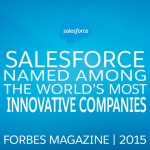A Quick Refresher On The A, B, Cs Of Cloud-Based CRM



Amid the day-to-day challenges of running a company, like trying to grow sales and delivering customer service, it may be easy to forget how cloud-based customer relationship management (CRM) can help contribute to key business outcomes. In that sense, there’s no time like now to look at what the business community has learned about CRM and cloud computing, and then apply it to your organization. Think of it as a grown up version of practicing your A, B, Cs.
When kids start school this week, they might understandably find it difficult to concentrate after two months of vacation. Their teachers might even accuse them of having their heads in the clouds.
For Canadian business leaders, though, keeping your head in the clouds might be a good thing, if it means thinking about the potential of cloud computing to change the way you get to know your customers.
Amid the day-to-day challenges of running a company, like trying to grow sales and delivering customer service, it may be easy to forget how cloud-based customer relationship management (CRM) can help contribute to key business outcomes. In that sense, there’s no time like now to look at what the business community has learned about CRM and cloud computing, and then apply it to your organization. Think of it as a grown up version of practicing your A, B, Cs:
A is for Analytics: A few months ago, Toronto-based market research firm IDC Canada described CRM as one of the fastest-growing software markets in the country. That’s because, as senior analyst Utsav Arora wrote in his report, CRM is benefitting from “an infusion of analytical capabilities.” In other words, CRM is no longer a standalone program that contains customer contact information but an ever-evolving trove of data that connects with other cloud-based tools, including everything from marketing automation and social media services to mobile apps. The result is a lot of deep insight into how customers and prospects have behaved in the past, combined with trends about how and when they may purchase in the future.
B is for Best Practices: If you want to know if something it worth the investment, it’s a good idea to ask someone with a good grasp of financials, like a chartered professional accountant (CPA). In June, CPA Canada released the results of its annual survey tracking its member companies’ satisfaction with CRM as well as other forms of business software. CPAs gave particularly high marks for the functionality and reliability of CRM software, something the report’s author attributed in part to the influence of cloud computing.
“Systems have finally become easier to use,” the report says. “Vendors want a long-term relationship with the customer because of the recurring maintenance or hosting fees. They also need to have their customers act as a reference to future prospects who often ask for at least two references before making a decision.”
To put it another way, businesses want to feel they’re getting consistent value and can benchmark their strategy against similar organizations. That’s the kind of best practice that works in almost any area, but is particularly applicable to cloud-based CRM.
C is for Collaboration: Yes, there’s also a “C” in CRM, cloud and Canada, but the thing that links all three is the need to work across departments in an organization, in order to make the most of every sales opportunity. This could include projects involving not only sales teams but marketing groups, IT and even finance to keep revenues strong. The Globe and Mail was among the first publications in Canada to notice this trend.
“In the last decade, as computing has moved online, CRM has led the way into the cloud . . . CRM is also pushing past people and into projects,” the newspaper said in ‘Cloud-based CRM keeps rising.’ That’s a story from 2012, but it reads as true today as it did three years ago.
You could probably keep going from D all the way to Z, but the important thing for Canadian businesses to remember is that lessons from combining cloud computing and CRM are worth re-learning over and over again.


















